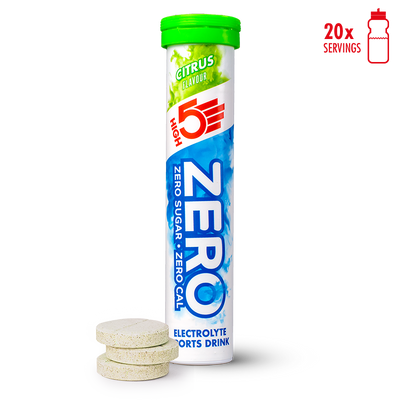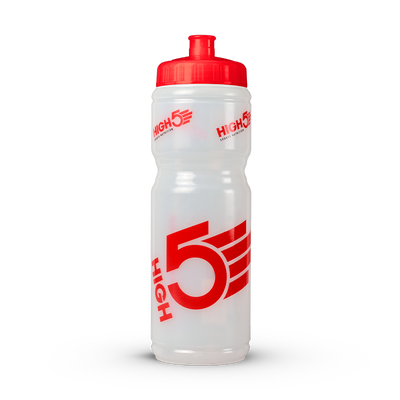Embarking on a run, only to be halted by the unwelcome sensation of a side stitch, is an all-too-familiar frustration for many runners and fitness enthusiasts.
Although not a medical emergency, the sharp stabbing pain in abdominal muscles can cause discomfort. Research shows that one in five participants in a single running event can suffer from stitches. Whether you're a seasoned marathoner or a novice hitting the pavement, the sudden, sharp pain of a stitch can be a significant hindrance.
In this guide, we will explore the root causes, preventive measures, and effective strategies to bid farewell to exercise-related transient abdominal pain. Additionally, you can also have a look at our guide to prevent stomach pains when running.
Let's lace up our running shoes and navigate the path to a stitch-free running experience.
What is a Stitch?
Ever felt a sudden, sharp pain just below your rib cage while working out? That's a stitch – a common woe for fitness enthusiasts. Also known as exercise-related transient abdominal pain (ETAP) or a side stitch, stitches can be a real buzzkill during physical activities. They can be caused by a combination of different reasons, including overtraining. They leave you wondering about their origin and how to get rid of stitches, and figure out how to avoid a side stitch.
Stitches, often referred to as side stitches, manifest as a stabbing pain in the abdominal muscle. Contrary to popular belief, they're not exclusive to exercise. These uncomfortable jabs can strike even when you're at rest. Improper breathing, consuming large meals before bedtime, or grappling with anxiety can all be culprits. Understanding these non-exercise-related triggers is key to tackling stitches in various scenarios.

How to Get Rid of a Stitch Summary
Below, we have added a summary to introduce you to what a stitch is how how to get rid of them during your runs in 2024:
- Stitch Overview: A stitch is a sharp pain below the rib cage, known as exercise-related transient abdominal pain (ETAP), causing localised pain.
- Causes: Triggered by improper breathing, large meals before exercise, and stress, leading to localised pain.
-
Relief Methods:
- Deep Breaths: Alleviate stitch pain by taking deep breaths and focusing on good posture.
- Pressure and Stretching: Apply pressure and stretch for stitches under the rib cage to reduce localised pain.
-
Prevention:
- Avoid Large Meals: Prevent stitches by eating smaller meals before activity.
- Diaphragmatic Breathing: Practice deep breaths to sync breathing with activity.
- Hydration: Stay hydrated to prevent muscle cramps.
- Warm-Up and Posture: Engage in warm-ups and maintain good posture.
- Listening and Adjusting: Recognise early signs of stitches and adjust your activity.
- Consistency: Regularly practise prevention techniques.
- Medical Attention: Seek medical attention if stitch pain persists.
What Causes Stitches When Not Exercising?
Stitches aren't limited to the treadmill; they can sneak up on you when you least expect it. While the mechanism behind non-exercise-related transient abdominal pain is not fully understood, it can often take you off guard. Non-exercise-related stitches might be triggered by factors including;
- Improper breathing
- Late-night feasts
- Stress
Knowing these causes is your first line of defence in preventing and addressing stitches, no matter the context. If you experience pain when not exercising, identify the exact cause first to treat it accordingly.
How to Get Rid of a Stitch Fast? Dealing with Different Types of Stitches
When a side stitch hits, you immediately seek quick relief from the pain. Deep diaphragmatic breathing can make a significant difference in minimising the pain. It involves inhaling through the nose and exhaling through pursed lips.
Adjust your breathing pattern, massage the bothersome spot, and consider dialling down your exercise intensity. Hydration and proper nutrition play crucial roles, too – your body will thank you, and those stitches will bid a hasty retreat.
Here are some specific solutions to get rid of a side stitch pain felt in different parts of your body.
How to Get Rid of Stitch When Running?
Running with a side stitch can be very challenging and painful. It feels both awkward and uncomfortable at the same time.
- Combat this annoyance by improving your breathing technique.
- Breathe deeply through the nose and exhale slowly through pursed lips.
- If a stitch tags along for your run, slow down, massage the affected area, and find a pace that lets you enjoy the wind in your hair without the pesky pain.
Proper breathing can make a significant difference in reducing exercise-related transient abdominal pain (ETAP).
How to Get Rid of a Stitch Under the Ribs?
Stitches beneath the ribs are particularly nagging, interrupting your workout flow and causing localised pain. They demand your prompt attention.
- Applying pressure to the offending area and adjusting your posture can offer swift relief.
- Stretching exercises targeting the abdominal region also play a role in preventing these stitches.
With the right moves and posture, you can effectively eliminate the side stitches that disrupt your runs.
How to Get Rid of Stitch in the Stomach?
Stomach stitches can give you a cramping sensation in your stomach. Dehydration and a lack of proper warm-ups can invite these side stitches without exercise. Stay hydrated before, during, and after exercise to keep stomach stitches at bay. Also, learn how to rehydrate fast to ensure your body has adequate fluids even after an intense physical activity.
Incorporate dynamic warm-up exercises that engage those core muscles, making your stomach a less hospitable environment for stitches to set up shop.
How to Get Rid of a Stitch in Your Chest?
Chest stitches, though often harmless, can be quite bothersome. They mimic the discomfort of more serious conditions, leading to unnecessary worry. Controlled breathing and good posture can work wonders in alleviating chest stitches. If the pain lingers or comes with other concerning symptoms, it's wise to consult a healthcare professional for peace of mind.
Usually, side stitches don't require you to seek medical care. Understanding the ins and outs of stitches allows you to take charge of your fitness journey. By embracing proper breathing techniques, tweaking your exercise routines, and staying mindful of hydration and nutrition, you can minimise the impact of stitches and relish a smoother, pain-free workout experience.
How Not to Get a Stitch? 7 Tips to Prevent a Stitch.
People who do intense physical activity, such as running, cycling, or working out, are often at a higher risk of getting stitches. Experiencing side stitches can throw a wrench into your workout routine. However, armed with proactive strategies, you can significantly reduce the risk of these discomforts and ensure a more enjoyable exercise experience.

1. Avoid Large Meals Before Physical Activity
Picture this scenario: a sumptuous feast followed by a vigorous workout. Sounds like a recipe for stitches, doesn't it? Consuming large meals just before engaging in physical activity increases the risk of stitches. Opt for smaller, well-timed meals to fuel your body without overwhelming your digestive system. For instance, if you are up for running a long distance, make sure you know what to eat before running, which fuels your journey without giving you stitches. This strategic approach minimises the chances of encountering the dreaded mid-exercise discomfort.
2. Practice Diaphragmatic Breathing
One of the primary culprits behind stitches is improper breathing. Stitches can strike when your breath is out of sync with your physical activity. Learning the art of deep diaphragmatic breathing can be a game-changer. Take a deep breath inhaling through your nose, letting your diaphragm muscle expand, and exhale slowly through pursed lips. This controlled breathing rhythm is a potent tool in preventing side stitches. Deep breathing ensures that your respiratory system works in harmony with your physical activity.
3. Stay Hydrated, Stay Stitch-Free
Dehydration is a silent ally of stitches. Insufficient water intake can lead to muscle cramps and discomfort during exercise, increasing the likelihood of side stitches. Make hydration a priority throughout the day, especially before, during, and after your workout. Keep a balanced fluid intake, using water and other hydration products to support your body during workouts.
Identify symptoms of dehydration and treat them to prevent them from causing a side stitch. A well-hydrated body is less prone to stitches, ensuring a smoother and more enjoyable fitness experience.
4. Warm-Up Rituals: Guarding Against Stitch Onset
Neglecting warm-up routines is akin to leaving your front door wide open for stitches to stroll in uninvited. Engaging in dynamic warm-up exercises prepares your body for the physical demands ahead, reducing the risk of stitches. Focus on movements that activate your core and gradually elevate your heart rate. A well-executed warm-up is your armour against the ambush of side stitches.
Integrate stretching exercises into your warm-up and cool-down routines, focusing on the abdominal area. These stretches improve blood flow and flexibility and reduce tension, reducing the risk of a side stitch during and after your workout.
5. Perfect Posture
Maintaining good posture is a preventive measure often underestimated in the battle against stitches. Whether standing, sitting, or exercising, proper alignment plays a crucial role. Studies reveal that your posture can affect the respiratory activity of the abdominal muscles. When running or engaging in dynamic activities, be mindful of your posture to minimise strain on the abdominal muscles. A body in proper alignment is less susceptible to the unexpected intrusion of stitches.
Integrate core-strengthening, higher-intensity workouts into your routine gradually. Sudden, intense exertion can heighten the risk of side stitches. Allowing your body to adapt over time to higher intensity levels minimises the likelihood of encountering discomfort during your workouts.
6. Listen to Your Body: Recognising Warning Signs
Your body communicates, and it's essential to pay attention to its signals. Recognising early warning signs, such as mild discomfort or changes in breathing patterns, allows you to take pre-emptive action before stitches happen.
If you sense the onset of a side stitch, stop exercising, make timely adjustments to your pace and breathing, or take short breaks. Listening to your body empowers you to intervene and prevent the full development of a side stitch.
7. Consistency is Key: Making Prevention a Habit
Preventing stitches isn't a one-time affair; it's a commitment to consistent habits. Whether it's mastering the art of breathing, timing your meals, staying hydrated, prioritising warm-ups, maintaining good posture, or listening to your body – make these practices an integral part of your fitness routine. Over time, these habits become your steadfast allies in the ongoing battle against stitches.
Now that you know how to prevent a side stitch, make preventive measures a consistent part of your exercise routine. Whether it's mastering deep breathing, staying hydrated, or maintaining good posture, establishing these habits as part of your regular fitness regimen builds resilience against side stitches over time.
Moreover, if these measures don't work and you experience prolonged stitch pain, you may need medical attention.
How to Get Rid of a Stitch - Conclusion
When it comes to stitches, prevention is better than cure. Mastering the art of stitch prevention involves a holistic approach to fitness. You can create a resilient defence by understanding the factors that contribute to stitches and adopting proactive habits.
From the nuances of breathing to the timing of meals and the importance of hydration, each element plays a vital role in keeping stitches at bay. Empower yourself with knowledge and consistency, ensuring that stitches become a rarity rather than a recurring obstacle on your fitness journey.
Lastly, keep yourself hydrated with HIGH5 throughout the day to prevent stitches and other problems.








